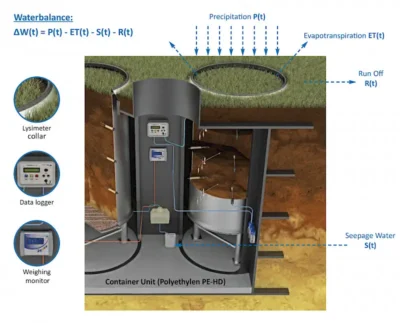
A lysimeter is a scientific instrument usually in the shape of a large container with a known volume and surface area. It is used to measure the amount of water that percolates through a soil column and to analyze movement of nutrients, salts, irrigation affects, or contaminants in the soil profile. It’s commonly used in agriculture, environmental science, and hydrology to study:
- Evapotranspiration (evaporation + plant transpiration)
- Leachate composition (chemicals moving below the root zone)
- Water balance in a soil system
The Lysimeter can be either filled manually with soil material (usually called ‘constructed’ soil column) or be equipped with an ‘undisturbed’ soil monolith excavated from the site of investigation. A lysimeter system can be either installed in the laboratory (laboratory lysimeter) or in the field (field lysimeter).
Types of Lysimeters
- Weighing Lysimeter – Measures water loss by weight change, ideal for accurate evapotranspiration studies.
- Non-weighing Lysimeter – Collects drainage water without weighing the soil. Non-weighing lysimeters are simpler and less costly, but less accurate.
- Forest Lysimeter – Used with tree stock.
- Groundwater Lysimeter – water level can be controlled according to real conditions or predefined scenarios.
- Hillside Lysimeter – Adapted to the inclination of the ground.
- Moor Lysimeter – Used in peatland
- Laboratory Lysimeter – Column experiments in different dimensions.
- Suction Lysimeter (AKA soil water samplers) – Uses suction to extract soil water through a porous ceramic cup, mainly for analyzing water chemistry.
Applications of Lysimeters
- Agriculture Research: Determining crop water requirements and optimizing irrigation practices.
- Environmental Monitoring: Studying the leaching of fertilizers and pesticides to prevent groundwater contamination.
- Climate Studies: Assessing the impact of climate variables on soil moisture and plant water use.
- Soil Science: Analyzing soil-water-plant interactions under controlled conditions.
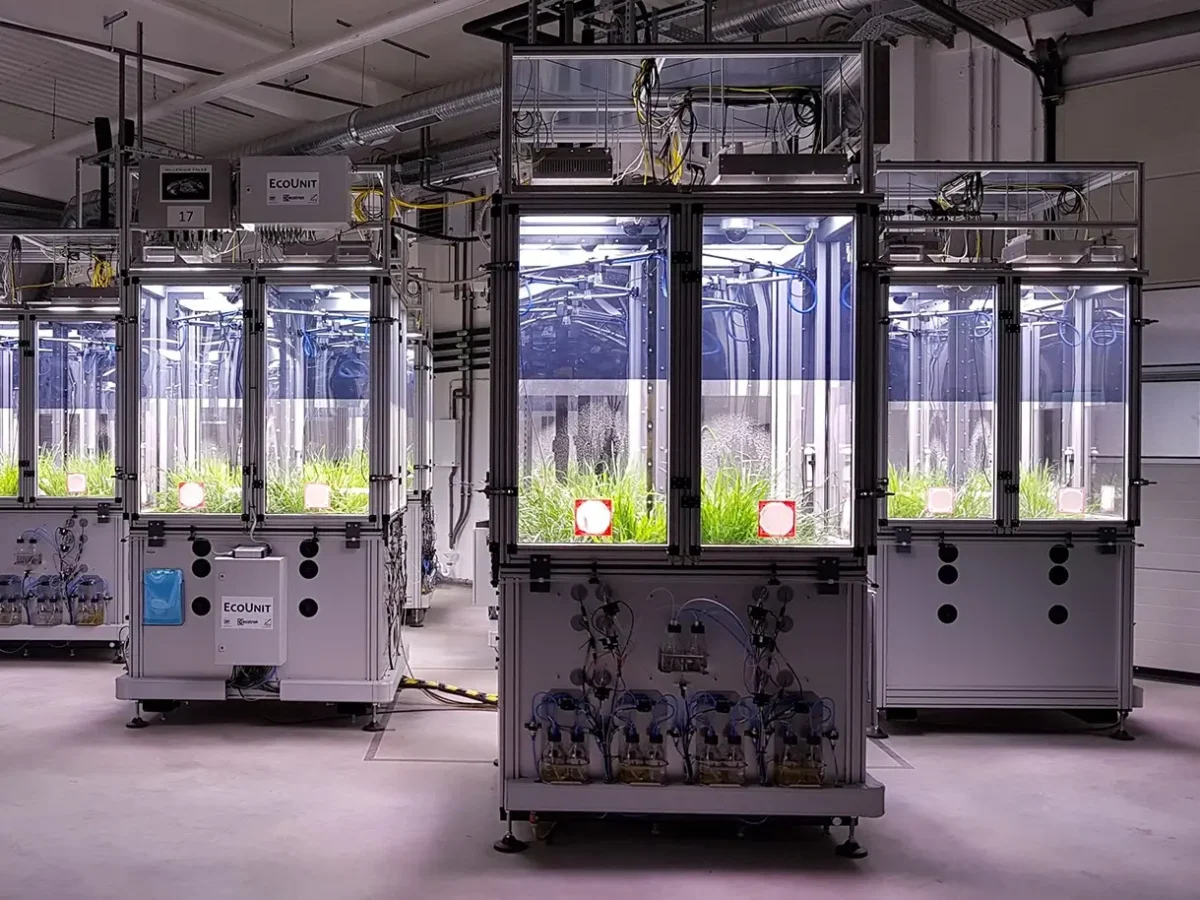
Lysimeter experiments are an effective method to determine water balance variables. In combination with precipitation measurements, it is possible to directly calculate the evapotranspiration rate by using the recorded mass change of weighable lysimeter. Lysimeter experiments are utilized to investigate water balances of ecosystems or crop water use of rain-fed crops. Lysimeters equipped with a leachate collecting system allow the quantitative and qualitative (in the laboratory) investigation of the seepage water.
Moreover, lysimeters can be equipped with additional sensors such as tensiometers, soil moisture probes, thermometers, and suction probes, which allow the investigation of the functioning and mechanisms of ecosystems. The results can be transferred from small or large scales. Due to the possibility of long-term field investigations under given site conditions, lysimeter experiments can be used to derive statements about the water balance under certain climate scenarios. A comparison of difference soil types or different vegetation under the same weather conditions over a longer time period are also common research goals. These investigations provide the foundation for many models to estimate the effect of climate change, the spread of contamination in the soil or the success of remediation measures.
Laboratory Lysimeter: Components and Functionality
1. Lysimeter Vessel
A cylindrical container, often made of materials like polypropylene or stainless steel, hold the soil sample that replicates natural field conditions. The vessel can accommodate both constructed (manually filled) and undisturbed soil monoliths, depending on the study’s requirements. The monolith serves as the medium through which water and nutrients move, allowing for accurate measurement of these processes.
2. Weighing Systems
The entire lysimeter setup is placed on a high-precision scale or load cells. This allows for continuous monitoring of weight changes, which correspond to water loss through evapotranspiration or gain through irrigation.
3. Irrigation System
An integrated irrigation head or sprinkler system simulates rainfall or watering events. This system can be controlled to apply specific amount of water at designated intervals.
4. Sensor Array
Advanced lysimeters are equipped with various sensors. These instruments provide real-time data on soil conditions, enhancing the understanding of water nutrient dynamics. For example, some sensors include:
Soil Moisture: Using tensiometers such as those provided by SoilMoisture or volumetric water content snesors such as the Stevens Hydra-Probe.
Soil Temperature: Thermistors measure temperature at different depths.
Electrical Conductivity: Indicates the concentration of soluble salts.
pH and Redox Potential: Provides soil chemical conditions.
5. Leachate Collection System
At the base of the soil column, a drainage layer collects percolating water. This system often includes a collection pan or reservoir to gather leachate for analysis, providing insights into nutrient leaching and groundwater recharge.
6. Control Station
A central control unit manages the operation of the lysimeter, including irrigation scheduling, data logging from sensors, and environmental controls like temperature and humidity.
Products
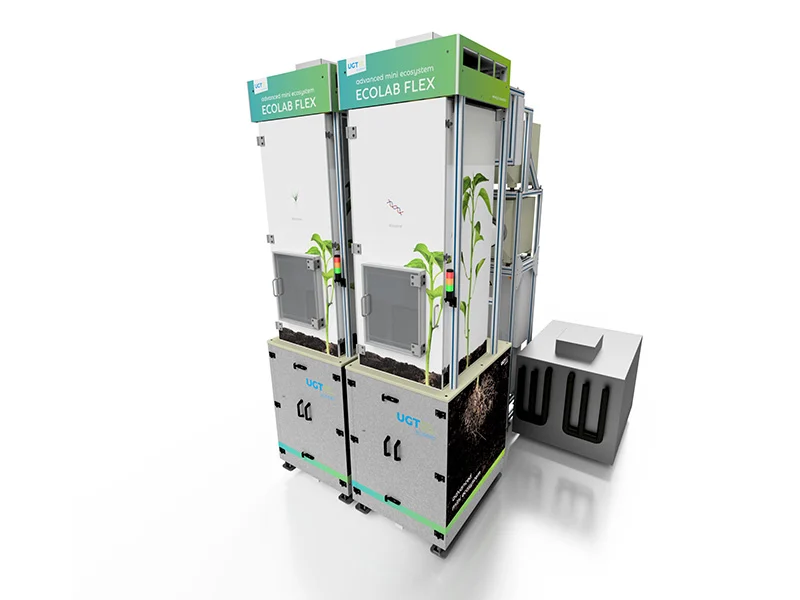
UGT EcoLab Flex
The UGT EcoLab Flex is a new generation of Ecotrons. The Ecolab flex can be designed as a single Ecotron with one lysimeter, as a single Ecotron with several stackable lysimeters, or as both.
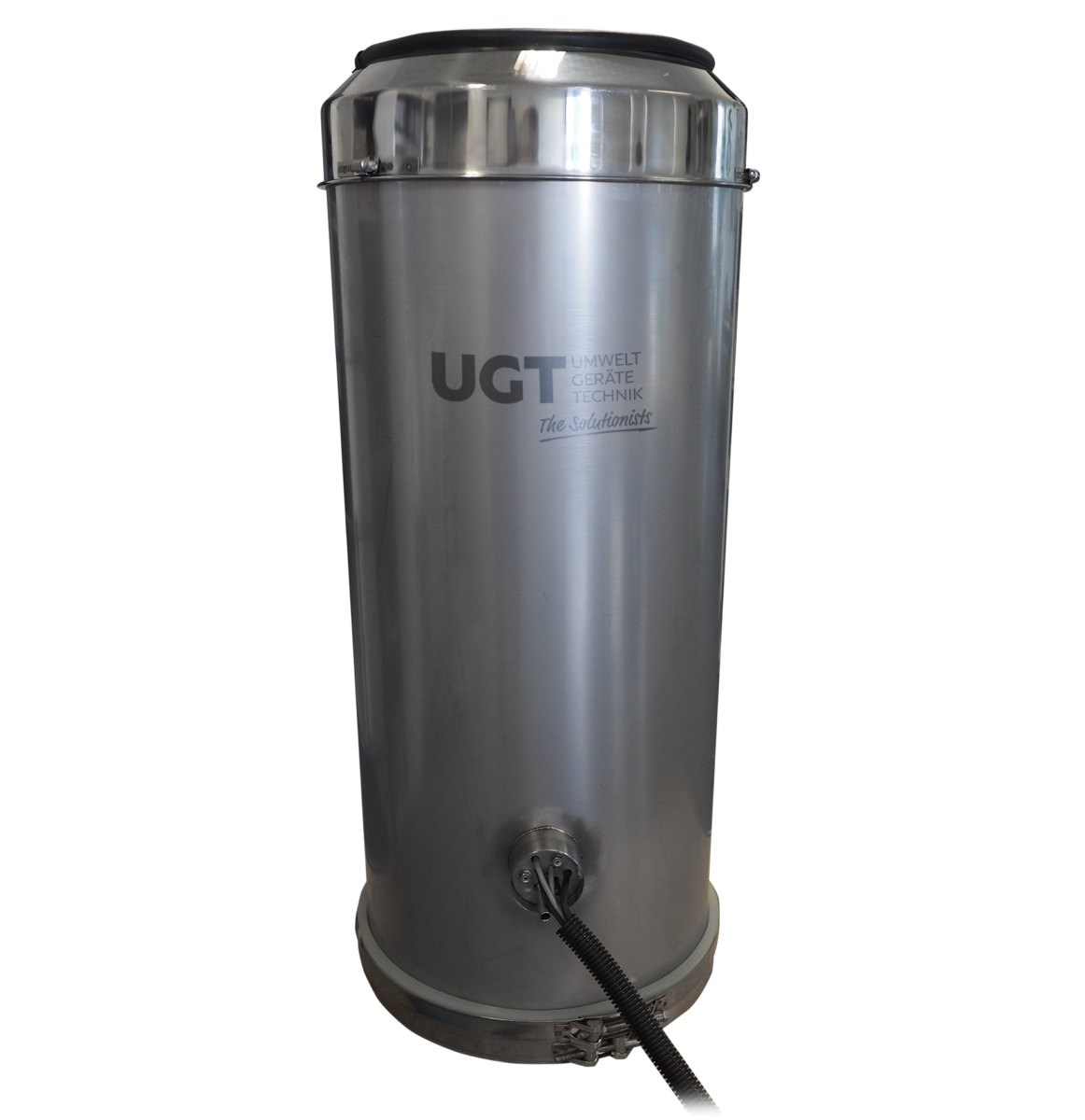
UGT Easy-To-Go Lysimeter (ETG)
The UGT Easy-To-Go Lysimeter (ETG) provides all the essential features for determining the key components of soil water balance.
The ETG consists of a lysimeter vessel with a diameter of 300 mm and a height of 600 mm, along with two soil moisture and temperature sensors, a tipping counter, a weighing system, and a data logger enclosure. The data is transmitted wirelessly to a data management portal. All ETG units are suitable for both constructed and undisturbed soil monoliths (using specialized sampling technology). The ETG lysimeter station can be set up and operated with standard tools—no training is required.
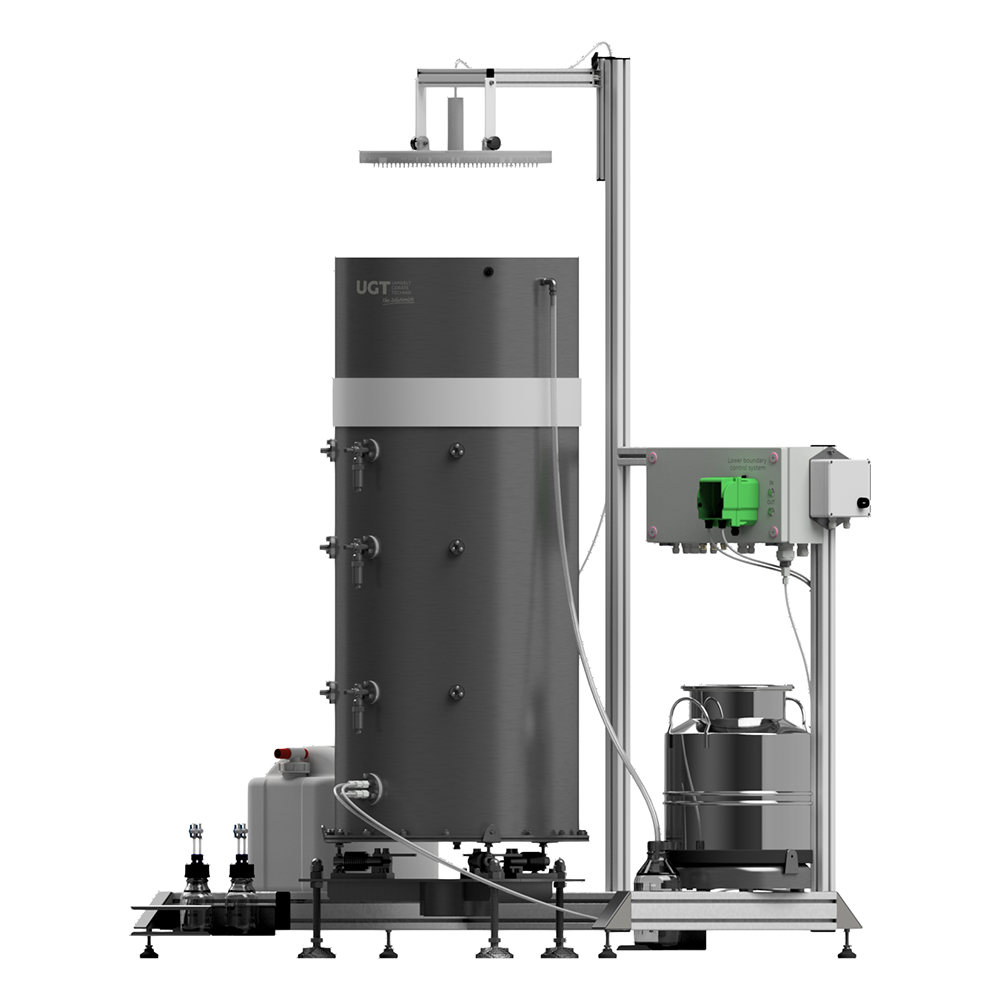
UGT Lab Lysimeter
The UGT Lab Lysimeter is a small weighing lysimeter lab setup suitable for both Constructed and Undisturbed soil monoliths. The Lab Lysimeter has applications in the water budget and ET studies.
The Soil Column setup is similar to the Lab Lysimeter. The Soil Column setup does not have a weighing feature, and it is suitable for soil hydrology and chemical transport modeling.
There are several options of diameter (200 to 800 mm) and height (200 to 1,500 mm).
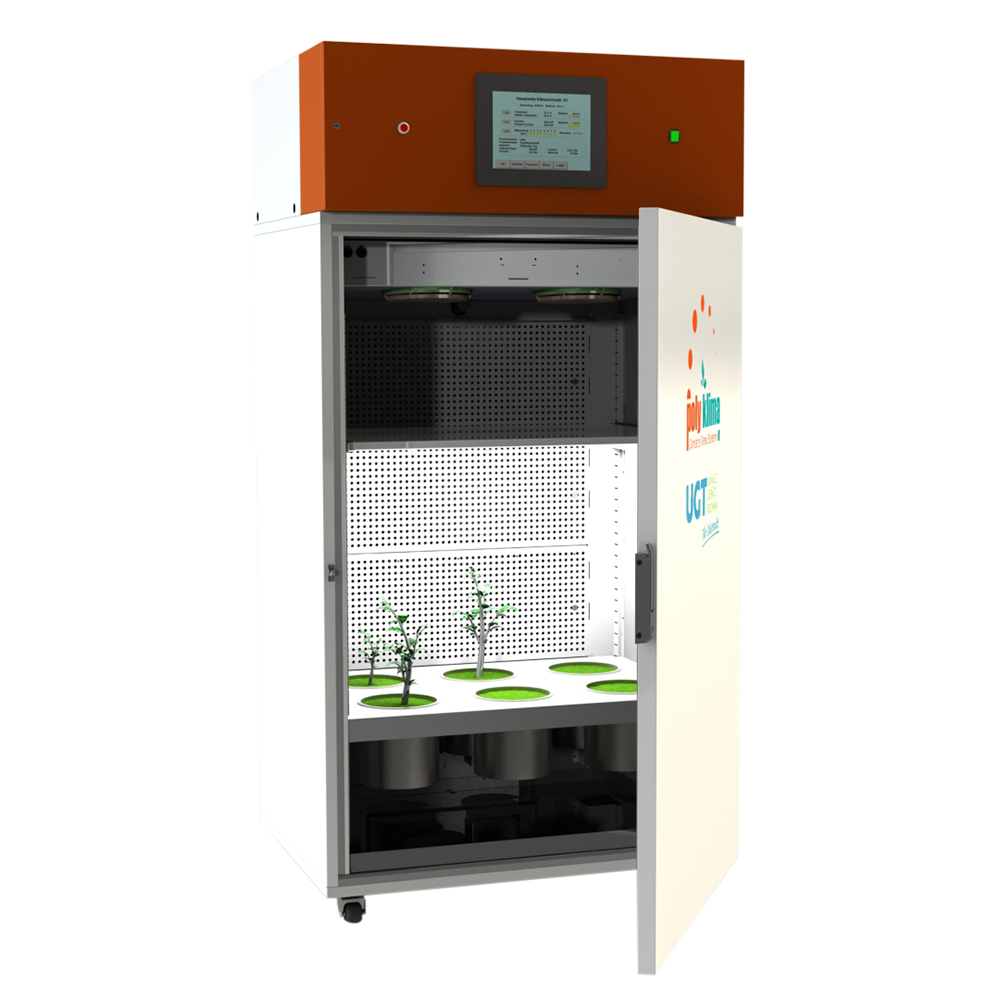
UGT EcoClim Growth Chamber
The UGT EcoClim Growth Chamber growth cabinet M1 was developed for plant biological applications that require stable and consistent ambient conditions. It has two climate areas with a horizontal insulation level. In the upper atmosphere area, the temperature, humidity and CO2 concentration are controlled. In the partition between the climatic zones there are openings for 6 small lysimeters, (a complete lysimeter system can be implemented). The temperature in the lower area can be set independently.
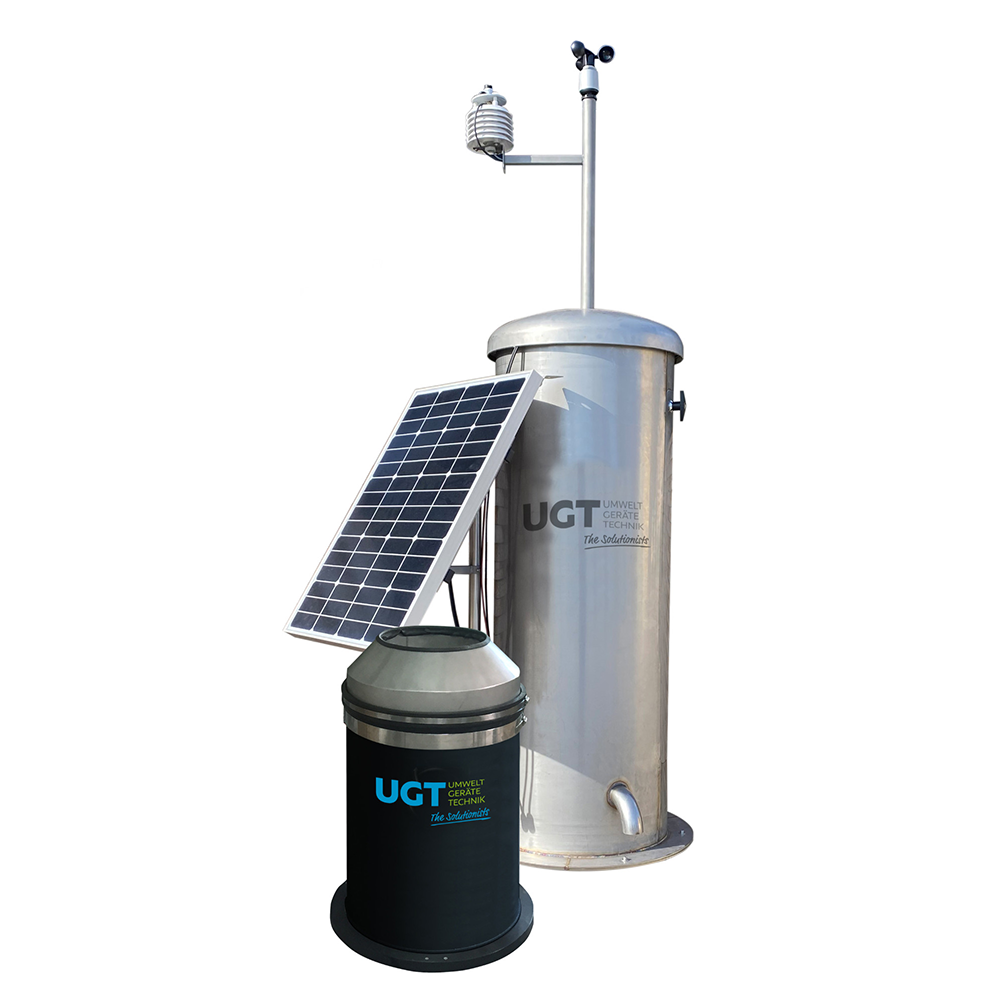
UGT Ready-To-Go Lysimeter
The Ready-To-Go Lysimeters are small weighable lysimeter stations suitable for monoliths with a diameter of 300,500,800 or 1130 mm and a length of 300, 600 or 900 mm. All Ready-To-Go Lysimeters (RTG) are suitable for both disturbed (filling by hand) and undisturbed soil monoliths (using specialized sampling technique). The entire RTG lysimeter station can be set up and put into operation without special tools and without trained UGT personnel. The standard RTG system consists of stainless steel lysimeter vessel, a weighing system, a leachate tank with tipping trough, a set of high-precision and accurate-fitting soil hydrological sensors, and a control station for each.
